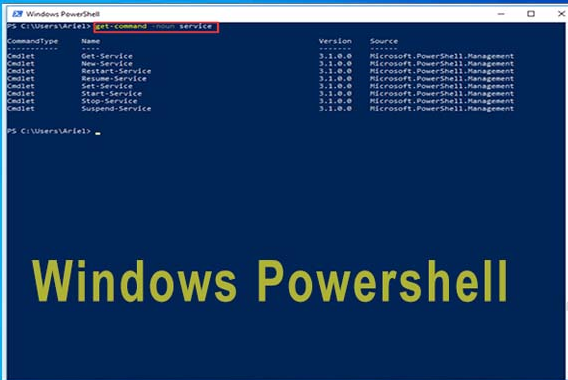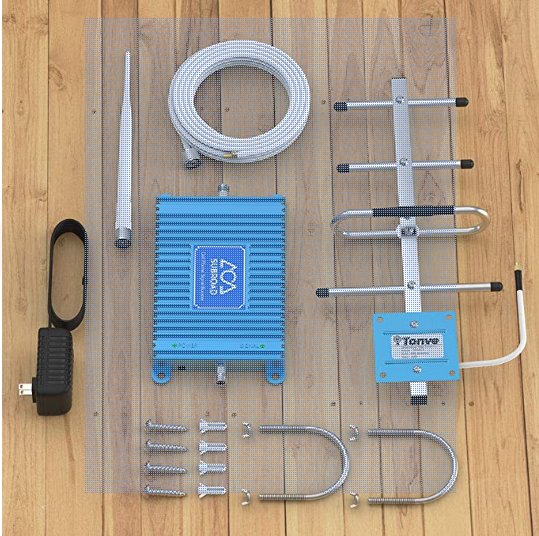How to Use Windows Powershell?

Windows PowerShell is a task-based command-line shell and scripting language designed especially for system administration. Built on the .NET Framework, Windows PowerShell enables IT, professionals and developers, to control and automate the administration of Windows and applications.
In this post, we’ll show you how to use Windows Powershell.
Windows PowerShell is a task-based command-line shell and scripting language designed especially for system administration
The shell includes an extensive, object-oriented scripting language that can be used to automate tasks or create new tools and utilities
You can use the Get-Help cmdlet to get basic information about any other cmdlet, including examples of how to use the cmdlet
For more comprehensive help, you can visit Microsoft’s online PowerShell documentation at https://docsMicrosoftcom/Powershell/
To launch PowerShell, simply type “Powershell” into the Start Menu search bar or open a command prompt window and type Powershell
What Can I Do With Windows Powershell?
Windows PowerShell is a task automation and configuration management framework from Microsoft, consisting of a command-line shell and associated scripting language built on the .NET Framework. PowerShell provides full access to COM and WMI, enabling administrators to perform administrative tasks on both local and remote Windows systems as well as WSUS and SCCM clients.
Additionally, various 3rd party tools offer cmdlets that extend PowerShell’s functionality. PowerShell’s remoting capabilities allow for server administration via secure shell (SSH) sessions, providing an alternative to graphical user interface–based administration tools such as Remote Desktop Connection or Server Manager. PowerShell supports various authentication mechanisms including Kerberos, Basic, CredSSP, and NTLMv2 – all of which can be used to establish SSH connections to remote servers.
How Do I Use Powershell on My Pc?
PowerShell is a powerful tool that can be used to automate tasks on your Windows PC. In this blog post, we will show you how to use PowerShell to perform some common tasks on your PC. First, let’s open PowerShell.
You can do this by opening the Start menu and searching for “PowerShell”. Once PowerShell is open, you’ll see a blue window with some white text. This is the PowerShell console.
Now that we have the console open, let’s try running some commands. Type Get-Process and press Enter. This command will list all of the processes that are currently running on your PC.
As you can see, there are quite a few! If we want to get more information about a specific process, we can use the Get-Process command followed by the name of the process. For example, type Get-Process chrome and press Enter.
This will give us information about the Chrome process including its ID number, memory usage, and more. We can also use PowerShell to kill processes that are no longer responding. To do this, we first need to find the ID number of the process that we want to kill.
We can do this using the Get-Process command as before. Once we have the ID number, we can type Stop-Process -ID [process id] and press Enter (replacing [process id] with the actual ID number). This will kill any process with that ID number immediately without warning or confirmation (so be sure you have entered the correct ID!).
There are many other things that you can do with PowerShell but these are just a few examples to get you started.
What is Powershell And How Do You Use It?
PowerShell is a powerful scripting language that enables you to automate tasks on Windows, Linux and macOS systems. PowerShell scripts can be used to perform a wide variety of tasks, such as managing files and folders, manipulating data, automating system administration tasks, and much more. To use PowerShell, you first need to open the PowerShell console.
On Windows systems, this can be done by clicking Start > Programs > Accessories > Windows PowerShell. On Linux or macOS systems, you will need to install PowerShell first. Once the console is open, you can type in PowerShell commands and press Enter to execute them.
Let’s say we want to list all the files in the current directory. We would simply type the following command into the PowerShell console: Get-ChildItem
This command will return a list of all items (files and folders) in the current directory. If we just want to list the files, we can use the -File parameter: Get-ChildItem -File
And if we only want to list directories (folders), we can use the -Directory parameter:
How Do I Use Microsoft Powershell Commands?
Before we start, let’s briefly answer the question: What is PowerShell? Simply put, PowerShell is a scripting language that enables you to control and automate Microsoft Windows operating system. And now let’s get into our guide on how to use Microsoft PowerShell commands.
To launch PowerShell, press the Windows key on your keyboard and type “PowerShell”. Then, click on the PowerShell app that should appear in the search results. Once you’re in the PowerShell console, you can start typing commands.
For example, to view all of the available cmdlets (commands), you can type Get-Command. To get help for a particular cmdlet, such as Get-Process, you can type Get-Help followed by the cmdlet name. For example Get-Help Get-Process.
This will bring up detailed information about how to use the cmdlet. If at any point you need to exit out of PowerShell, you can type Exit and hit Enter on your keyboard. Now that we’ve gone over some basics, let’s dive deeper into using PowerShell commands.
One way to find out what parameters are available for a cmdlet is by using Tab completion. For instance, if I wanted to know what parameters are available for the Stop-Process cmdlet, I would type Stop-Process – and then hit the Tab key twice like so: Stop-Process -[tab][tab]. Doing this will show a list of all available parameters for that specific cmdlet.
You can also use wildcards with many cmdlets. For example, if I wanted to see all of the processes that contained the word “notepad” in them, I could type Get-Process notepad*. The asterisk (*) is acting as a wildcard here and will return any processes whose name includes “notepad”.
Lastly, another useful feature is being able to run multiple commands at once using. For instance,’ Get-Service && Get- processes will return a list of all running services and all currently running processes on my computer simultaneously.
What is Windows Powershell?
Windows PowerShell is a task-based command-line shell and scripting language designed especially for system administration. Built on the .NET Framework, Windows PowerShell enables IT, professionals and developers, to control and automate the administration of Windows and applications.
Windows PowerShell includes an interactive prompt and a scripting environment that can be used independently or in combination. When used together, they provide a powerful tool for managing, automating, and monitoring Microsoft® Windows®-based environments. The cmdlets, providers, aliases, scripts, functions, and profiles that make up the PowerShell language are all written in managed code that runs in the common language runtime (CLR).
This makes them easy to extend by writing your own cmdlets and providers as well as simple to use from any programming or scripting languages that target the CLR. Administrators can use PowerShell to perform administrative tasks on both local and remote Windows systems. In addition to providing command-line capabilities similar to those found in UNIX shells, administrators can write scripts to automate repetitive or complex tasks.
These same scripts can also be invoked interactively from within the PowerShell console itself—making it possible for users who are not experienced programmers to take advantage of this powerful automation toolkit.
How to Use Powershell on Windows 10?
If you’re a Windows power user, then you know the value of the command line. And if you’re a Windows 10 user, then you know that PowerShell is now the default command line interface. In this blog post, we’ll show you how to use PowerShell on Windows 10.
First, let’s open PowerShell. You can do this by clicking Start and typing “PowerShell”. Then, hit Enter.
Now that PowerShell is open, let’s take a look at some of the basic commands. To see a list of all available cmdlets (commands), type Get-Command and hit Enter. To get help for a specific cmdlet, type Get-Help followed by the cmdlet name.
For example, to get help for the Get-Process cmdlet, we would type Get-Help Get-Process. Let’s try out a few cmdlets now. Type Get-Process and hit Enter to see all running processes on your system.
To end a process, use the Stop-Process cmdlet followed by the process ID or process name. For example, to stop Notepad++ , we would type Stop-Process -Name “notepad++” . We can also use PowerShell to manage files and folders on our system.
For example, let’s say we want to create a new folder called C:\temp\test. We can do this with the New-Item cmdlet like so: New-Item -Path “C:\temp\test” -ItemType Directory. Notice that we needed to specify the ItemType as Directory since we’re creating a folder; if we were creating a file, we would specify ItemType as File.
How to Open Powershell from Cmd?
If you’re a Windows user, then you’ve probably come across the Command Prompt before. This is a command-line interface that allows you to enter commands and perform tasks on your computer. While the Command Prompt can be used for a variety of tasks, it’s not always the most user-friendly tool.
If you’re looking for an alternative to the Command Prompt, then consider using PowerShell. PowerShell is a task automation and configuration management framework from Microsoft that includes a command-line shell and associated scripting language. PowerShell provides access to many features in Windows that are not accessible through the standard graphical user interface (GUI).
In addition, PowerShell can be used to automate repetitive or complex tasks. To open PowerShell from the Command Prompt, simply type “PowerShell” into the prompt and press Enter. You should see something like this:
Microsoft Windows [Version 10.0.10240] (c) 2015 Microsoft Corporation. All rights reserved.
Windows Powershell Download
If you’re looking for a powerful scripting language for Windows, look no further than PowerShell. This command-line shell and scripting language lets you control and automate nearly everything in Windows, from simple tasks like managing files and printers to more complex system administration. PowerShell is available as a free download for all versions of Windows, and you can find it in the Microsoft Download Center.
Just search for “PowerShell” and select the version that matches your operating system. Once you’ve downloaded PowerShell, double-click the installer file to start the installation process.
Powershell Example
Powershell is a powerful scripting language that can be used to automate many tasks in Windows. In this example, we will use Powershell to create a new user in Active Directory. To do this, we will first need to open the Powershell console and import the Active Directory module.
Next, we will use the New-ADUser cmdlet to create our new user. We will need to provide a name for the user, an account password, and set their account status to enabled. We can also specify additional properties such as the users’ email addresses and physical addresses.
Once our new user has been created, we can then add them to any groups that they need access to. To do this, we will use the Add-ADGroupMember cmdlet. We will need to provide the group name and the name of our new user.
That’s it! Our new user has now been created and added to any necessary groups. This process can be automated even further by using scripts or modules designed specifically for managing users in Active Directory.
Powershell Windows 11
Powershell is a powerful scripting language that helps you automate tasks in Windows. Powershell version 5 was released with Windows 10, and version 6 is currently in development. In this blog post, we’ll take a look at some of the new features in Powershell 6 that make it a great choice for automating tasks in Windows 11.
One of the most exciting new features in Powershell 6 is its support for PowerShell classes. Classes allow you to group together related cmdlets and functions, making your code more organized and easier to reuse. For example, you could create a class called “Network” that contains all the cmdlets related to networking tasks.
This would make it easy to find the cmdlets you need when working on a network-related task, and also makes your code more readable. Another great new feature in Powershell 6 is its support for PowerShell Workflows. Workflows allow you to run long-running tasks asynchronously, so they don’t block the execution of other code.
This can be extremely useful when automating complex tasks that would otherwise tie up your computer while they’re running. For example, you could use a workflow to run multiple tests concurrently, or process large data sets without blocking other processes from running. If you’re looking for a powerful scripting language to help automate tasks in Windows 11, Powershell 6 is a great choice!
Powershell Tutorial
If you’re looking to learn Powershell, this tutorial is a great place to start. We’ll cover the basic concepts and syntax of Powershell so that you can start using this powerful tool to automate tasks and speed up your workflows.
How to Run Powershell Script?
In PowerShell, running a script is as easy as opening it in Notepad (or your favorite text editor) and then saving it with a .ps1 file extension. For example, let’s say you have a script called “MyScript.ps1” in the current directory.
To run this script, all you need to do is type: & MyScript.ps1 at the PowerShell prompt, and press Enter.
That’s it! Your script will now run. Of course, there are a few things to keep in mind when running scripts.
By default, PowerShell will only allow you to run signed scripts that come from trusted sources. This is a security measure to prevent malicious code from running on your system without your knowledge or consent. However, you can easily change this behavior by changing your Execution Policy setting.
For more information about Execution Policies, see the About Execution Policies section of the Microsoft TechNet Script Center website. Once you have your Execution Policy set appropriately for your environment, you can also run scripts directly from within the PowerShell console itself. To do this, simply type the path and filename of your script at the prompt, and press Enter:
Conclusion
Windows PowerShell is a task-based command-line shell and scripting language designed especially for system administration. Built on the .NET Framework, Windows PowerShell helps IT professionals and power users control and automate the administration of the Windows operating system and applications that run on Windows.





